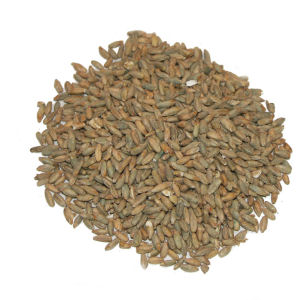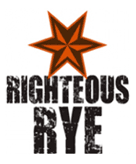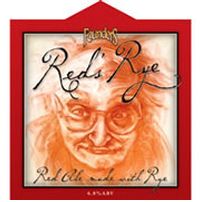I’m trying to will summer into existence by looking at some of the best summer sippin’ beers. Nothing beats sitting lakeside and enjoying a great wheat beer. There are two main styles here, the German weissbier and the Belgian witbier. I’ll guide you through both, and a few more variations. All wheat beers, as the name suggests, are made with malted wheat replacing some percentage of the malted barley. Whatever style you order, though, make sure to ask the barkeep to hold the orange or lemon slice.
Weissbier
German wheat beers, the most common of which is the hefeweizen, are ales brewed under Reinheitsgebot law. “Weizen” means wheat, and “hefe” means with yeast. In other words, these beers are unfiltered. Many styles filter out the yeast after fermentation to produce a clear beer. Hefeweizens, however, leave the yeast in. The result is a cloudy brew with a lot of yeast character. For this style, the yeast comes across as an unmistakable mixture of banana and cloves, with some other fruits and spices mixed in.
 Hefeweizens also tend to create tremendous head when poured. I’ll have a post about why head is good (lol) another day, but for now know that it powers up aromatics and helps filter certain off-flavors. The weizen glass is tall, slender and tapered — designed to boost, maintain and show off the puffy head.
Hefeweizens also tend to create tremendous head when poured. I’ll have a post about why head is good (lol) another day, but for now know that it powers up aromatics and helps filter certain off-flavors. The weizen glass is tall, slender and tapered — designed to boost, maintain and show off the puffy head.
Germany has several other styles of wheat ale. There’s a good chance you’ve seen a dunkelweizen (“dunkel” to its friends). That’s basically a dark hefeweizen. Dunkels tend to be sweeter, richer and have more banana characteristic than their cousins. There’s also the weizenbock, which is essentially a double-strength dunkel. These beers are ferociously complex — Schneider Adventinus is easily one of the top ten beers on Earth for my money.
A unique and obscure style called Berliner Weiss is starting to appear in American fermenting tanks. It’s brewed like a hefeweizen, but with the addition of lactic bacteria. The result tastes almost like a hefeweizen mixed with lemonade. I’ve only found a couple of examples of the style (had one at Iron Hill brewpub in Pennsylvania once, and another by New Glarus in Wisconsin), but we might be looking at the ideal summer beer. I sincerely hope more American brewers give it a shot.
Witbier
Let’s hop over to Belgium for a spell. German wheat beers are brewed under Reinheistgebot rules, meaning only water, malted barley/wheat, yeast and hops can enter. Belgian witbiers, by contrast, almost always have additives that you might not associate with beer. While German beers have a spicy aroma from the yeast, Belgian witbiers actually contain spice (though the yeast certainly contributes as well). Coriander, cloves and orange peel are customary, but you can also find witbiers with chamomile, grains of paradise, allspice, and crazy stuff you’ve probably never heard of.
Belgian witbiers, like the German variety, are unfiltered. They too are cloudy and have gigantic heads. The difference is in the sweetness and the spices. In your pre-craft days you’ve probably had Blue Moon and/or Hoegarden, which are mediocre examples of the style (though, granted, better than most other offerings you might find at your local dive.)
 New York Ale Project’s Favorite German Weissbier: Weihenstephaner Hesseweissbier by the world’s oldest brewery (they claim a founding date of 1040) is a world class beer that should be a part of any beer geek’s heavy rotation. But to me, it’s edged out ever so slightly by Aventinus by Schneider. We’ve got a bit of banana, though nowhere near as overpowering as you often have in the style. That yeast is really popping, with a bunch of funk and spice. The sweet malt certainly dominates, but there’s a bitterness in there too that reminds me of wine. This is one of those beers that I give to my wine drinking friends as counterpoint. (In fact, I did serve it up at a beer tasting for Tapped Craft Beer Events. I’ll do it again, too. Just try to stop me.)
New York Ale Project’s Favorite German Weissbier: Weihenstephaner Hesseweissbier by the world’s oldest brewery (they claim a founding date of 1040) is a world class beer that should be a part of any beer geek’s heavy rotation. But to me, it’s edged out ever so slightly by Aventinus by Schneider. We’ve got a bit of banana, though nowhere near as overpowering as you often have in the style. That yeast is really popping, with a bunch of funk and spice. The sweet malt certainly dominates, but there’s a bitterness in there too that reminds me of wine. This is one of those beers that I give to my wine drinking friends as counterpoint. (In fact, I did serve it up at a beer tasting for Tapped Craft Beer Events. I’ll do it again, too. Just try to stop me.)
New York Ale Project’s Favorite Belgian Witbier
 I’m not as big a fan of the Belgian-style wheat beers as I am the German ones, but there are some standouts. The winner has to be Allagash White. It’s sweet, spicy, and a little more restrained than many other Belgian beers. Smooth as silk. It’s definitely a craft beer summer classic.
I’m not as big a fan of the Belgian-style wheat beers as I am the German ones, but there are some standouts. The winner has to be Allagash White. It’s sweet, spicy, and a little more restrained than many other Belgian beers. Smooth as silk. It’s definitely a craft beer summer classic.














